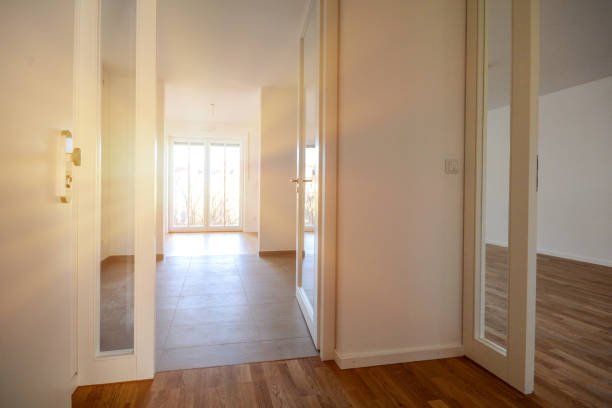
Wood doors have long been a staple in architecture and interior design, prized for their natural beauty, durability, and versatility. With advancements in technology and design, new wood doors are not only maintaining their classic appeal but also integrating modern features that enhance their functionality and aesthetic value. This article explores the latest trends, benefits, and considerations for choosing new wood doors for your home or office.
Trends in New Wood Door Design
- Sustainable Materials As environmental consciousness grows, there’s an increasing demand for sustainable wood options. Many manufacturers now offer doors made from responsibly sourced or reclaimed wood. These eco-friendly choices help reduce deforestation and support sustainable forestry practices.
- Innovative Finishes Advances in finishing techniques have expanded the range of available styles. Homeowners can now choose from a variety of finishes, including distressed, hand-scraped, or wire-brushed textures, which add character and depth to the wood. Matte finishes are also gaining popularity for their modern, understated look.
- Customization and Personalization Modern technology allows for a high degree of customization. Laser cutting and CNC machining enable intricate designs and precise cuts, allowing homeowners to personalize their doors with unique patterns, engravings, or even integrated glass panels. This level of customization ensures that each door can be a unique statement piece.
- Smart Technology Integration Smart home technology is making its way into wood door design. Features like keyless entry systems, biometric scanners, and smart locks can be seamlessly integrated into new wood doors, providing enhanced security and convenience.
- Mixed Materials Combining wood with other materials such as metal, glass, or stone is a growing trend. These mixed-material designs create visually striking doors that can complement various architectural styles, from rustic to contemporary.
Benefits of New Wood Doors
- Aesthetic Appeal Wood doors offer a timeless beauty that can enhance the visual appeal of any space. The natural grain patterns and warm tones of wood create a welcoming and elegant atmosphere.
- Durability and Longevity High-quality wood doors are incredibly durable and can last for decades with proper care. They are resistant to wear and tear, making them a cost-effective investment in the long run.
- Insulation and Energy Efficiency Wood is a natural insulator, providing excellent thermal and acoustic insulation. New wood doors can help maintain indoor temperatures and reduce energy costs by preventing heat loss in the winter and keeping interiors cool in the summer.
- Versatility Wood doors are highly versatile and can be tailored to suit a wide range of architectural styles and personal preferences. Whether you prefer a traditional, rustic look or a sleek, modern design, wood doors can be customized to match your vision.
- Resale Value High-quality wood doors can increase the resale value of your home. Prospective buyers often appreciate the classic appeal and durability of wood doors, viewing them as a desirable feature.
Considerations When Choosing New Wood Doors
- Type of Wood Different types of wood offer varying levels of durability, appearance, and cost. Common choices include oak, mahogany, maple, and walnut. Each type has its own unique characteristics, so it’s important to choose one that aligns with your aesthetic and functional needs.
- Maintenance Wood doors require regular maintenance to keep them looking their best and to ensure their longevity. This includes periodic cleaning, refinishing, and protecting them from excessive moisture and direct sunlight.
- Climate Consider the climate of your area when choosing a wood door. Wood can expand and contract with changes in temperature and humidity, so selecting a type of wood that is stable and resistant to warping is crucial for areas with extreme weather conditions.
- Security While wood doors are generally sturdy, it’s important to consider additional security features. Reinforced cores, high-quality locks, and smart technology integrations can enhance the security of your wood door.
- Budget Wood doors can vary significantly in price based on the type of wood, design complexity, and additional features. It’s important to establish a budget and explore options that provide the best balance of quality, aesthetics, and cost.
Conclusion
New wood doors are more than just functional barriers; they are integral elements of design that can enhance the beauty, security, and efficiency of a space. With a wide range of styles, finishes, and technological integrations available, today’s wood doors offer something for every taste and need. By carefully considering the type of wood, maintenance requirements, climate compatibility, security features, and budget, homeowners can make an informed choice that will provide lasting value and satisfaction.





